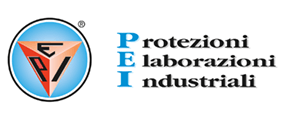Machine tools: What they are and why to protect them
What they are and why to protect them
How to protect machines from swarf and coolants
Waterproof telescopic covers
Protective bellows for machine ceilings Wave-Sky
Machine tools by definition modify the geometry of the workpiece by removing chips. This operation produces friction between the workpiece and the tool.
Friction is reduced by spraying the working area with cooling oil to dissipate the heat generated.
Coolant (or industrial lubricating oil or metalworking lubricating oil) is a process fluid used in the mechanical industry during machining and grinding operations.
All machine components must guarantee integrity and precision throughout their service life.
Inevitably, swarf and cooling lubricants in contact with moving parts would cause rapid degradation.
Machine tool repairs
For several decades now, all machine tools have been equipped with specific dynamic protective covers. These are covering elements capable of supporting the movement of the carriages installed on the traversing axes.
There are many variants of protection depending on certain characteristic aspects:
- Chips: Quantity, size, material and temperature;
- Coolant: Quantity, type.
How to protect machine tools
Machine tool guards are basically divided into three types:
- Telescopic
- Bellows
- Roller blinds
Telescopic Covers are the most robust solution, consisting of boxed steel elements that fit one inside the other in a telescopic movement. The end of one element is fixed to the machine base and the end of the opposite element is fixed to the carriage. The movement of the carriage drags the first element which hooks up to the second element dragging it in turn and so on to the last element. This solution is suitable for large-scale removal of hot swarf (typical of dry grinding). They are very resistant to coolants, even if they are not watertight and therefore in the presence of a large flow of liquid there may be infiltrations in the most delicate areas.
The main limitation is the weight, which forces the wagon to pull more and limits the dynamics of movement. They are suitable for travel speeds normally within 40 m/min.
Protective Bellows consist of a plastic bellows reinforced by internal PVC supports. One end is connected to the base and the other to the carriage.
Due to their light weight, they are suitable for highly dynamic machines (they can work at over 300 m/min). They have very good resistance to coolant. They resist moderate amounts of small chips (finishing and grinding sludge). To increase the resistance to larger chips, they can be shielded with thin stainless steel flaps.
Roller shutters consist of a spring-loaded winder that rolls up a flexible band (similar to the movement of a retractable insect screen). The band has a huge range of variants from the lightest polyurethane ‘cloth’ with a thickness of less than a millimetre to aluminium roller shutters that can even be walked on.
The operation consists of fixing the winder to one end of the machine and the belt end to the moving carriage. Moving the carriage away from the fixed part forces the belt to unroll. The internal movement is supported by the power of the springs inside the winder which draws and rewinds the belt.
Due to the enormous range of combinations of different belts and mechanisms of various sizes, they can be used on all types of machine tools.

